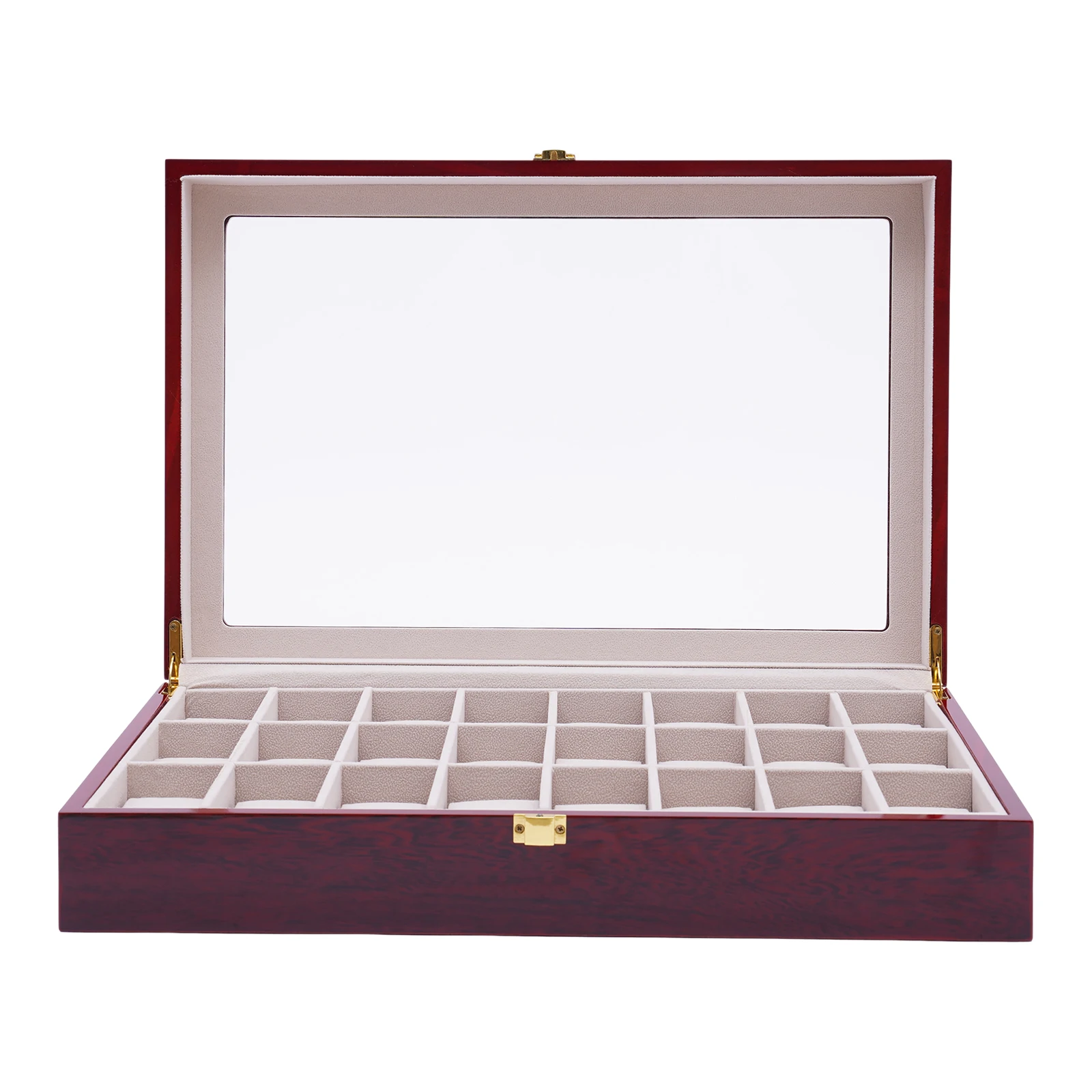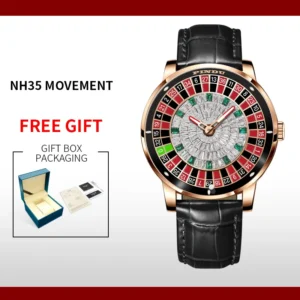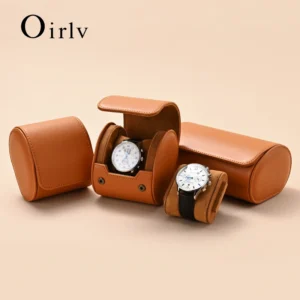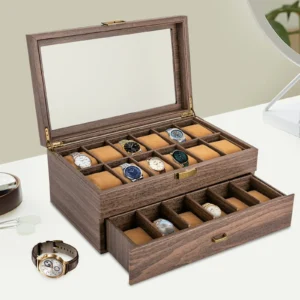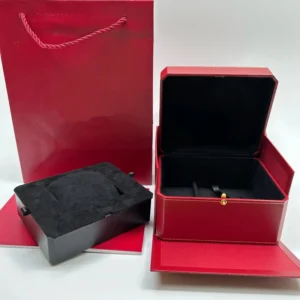Why Proper Luxury Watch Storage is Essential for Collectors
Luxury timepieces represent more than just functional accessories—they’re investments, heirlooms, and expressions of personal style. Without proper storage, these valuable items face unnecessary risks that can diminish both their appearance and value.
Proper watch storage provides three essential benefits:
- Protection – Shields your timepieces from dust, humidity, scratches, and accidental damage
- Organization – Creates an orderly system to access, enjoy, and maintain your collection
- Value preservation – Maintains the condition and functionality critical for resale value
The consequences of improper storage can be severe and often irreversible. Fine watch materials like leather, precious metals, and delicate movements are particularly susceptible to environmental damage. For automatic watches, extended periods of inactivity without proper winding can lead to lubrication issues and decreased accuracy.
Comprehensive watch collection storage planning establishes the foundation for preserving both the aesthetic beauty and mechanical integrity of your timepieces. The difference between casual storage and purposeful protection often becomes apparent when watches change hands, as collectors find properly maintained pieces command significantly higher values.
Assessing Your Collection: What to Consider Before Choosing Storage
Before investing in storage solutions, evaluating your specific collection needs will save both time and money. Consider these key factors:
- Collection size and growth plans – Current quantity and realistic projections for future acquisitions
- Watch types and mechanisms – The balance of automatic, manual, and quartz pieces determines specific storage needs
- Value distribution – Higher-value pieces may warrant premium individual storage solutions
- Wear frequency – Regularly worn watches have different needs than occasionally worn pieces
- Space constraints – Available room for display cases, winders, and safes
Each watch type presents unique storage requirements. Automatic watches benefit from winders to maintain accuracy when not worn. Manual watches need regular winding regardless of storage method. Quartz watches, while less demanding, still require protection from environmental factors.
Your lifestyle also influences storage choices. Frequent travelers might prioritize quality travel cases, while those who rotate between a few daily watches might invest more in premium winders. Organizing your watch collection systematically ensures each timepiece receives appropriate care while maintaining accessibility for enjoyment.
Premium Watch Boxes & Display Cases: Foundation of Any Collection
Quality watch boxes and display cases form the cornerstone of proper timepiece storage, offering both protection and presentation capabilities. The materials used significantly impact both aesthetics and functionality.
Material Quality and Craftsmanship
Exterior Materials:
– Hardwoods (walnut, cherry, mahogany) provide durability and elegant appearance
– Carbon fiber offers modern styling with lightweight strength
– Genuine leather provides sophisticated texture and classic appeal
Interior Materials:
– Soft suede or velvet prevents scratches and abrasions
– High-density foam with precision cutouts provides secure positioning
– Silk or microfiber adds luxury while protecting delicate components
A properly constructed watch box reveals its quality through features like smooth-operating hinges, secure closures, and precisely fitted components. Premium boxes employ traditional woodworking techniques such as dovetail joints for durability and refined appearance.
Material Comparison
| Material | Durability | Aesthetic Appeal | Protection Level | Price Range |
|---|---|---|---|---|
| Walnut | Excellent | Classic, rich | High | $$$-$$$$ |
| Cherry | Very good | Warm, refined | High | $$$-$$$$ |
| Carbon Fiber | Excellent | Modern, technical | Very high | $$$$-$$$$$ |
| Leather (exterior) | Good | Sophisticated, traditional | Good | $$$-$$$$ |
When comparing types of watch storage, consider how your collection might grow and evolve. Many collectors begin with quality luxury watch boxes that offer flexibility for various watch sizes while providing consistent protection. Premium boxes typically range from $100-300 for quality entry-level options, while ultra-premium cases with advanced features can exceed $1,000.
Watch Winders: Maintaining Automatic Timepieces
Automatic watches rely on movement to stay wound and accurate. When not worn, watch winders serve as essential tools for maintaining these sophisticated timepieces, especially those with complex complications like perpetual calendars or moon phases.
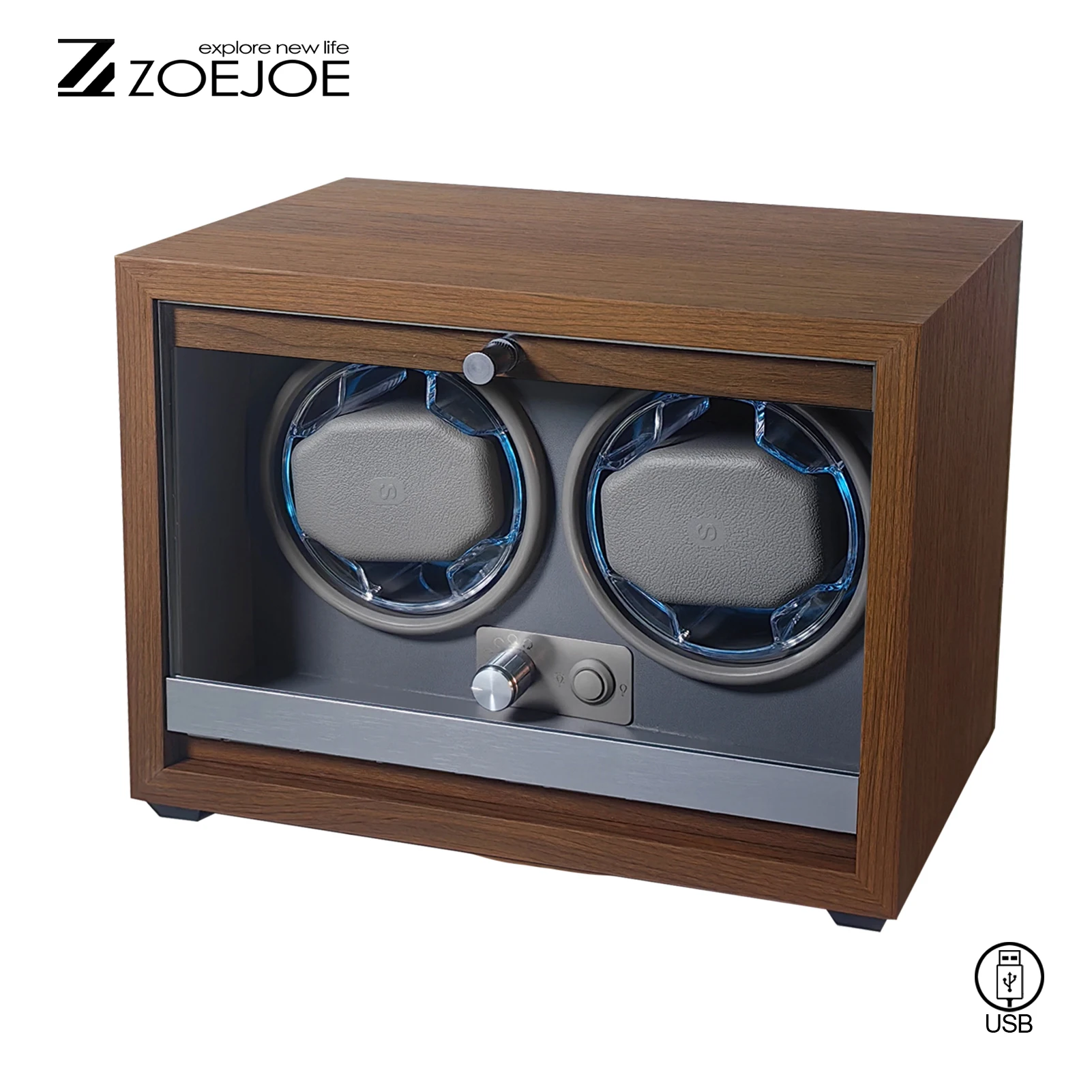
Key Features to Consider in Quality Winders
- TPD (Turns Per Day) – Adjustable settings to match specific watch requirements
- Rotation direction – Clockwise, counterclockwise, or bidirectional options
- Motor quality – Silent operation and consistent performance
- Power source – Battery operation for portability vs. AC power for permanent setups
- Programming options – Timer functions and rest periods to prevent overwinding
Quality winders use Japanese or Swiss motors designed for years of quiet, reliable operation. Entry-level luxury winders typically start around $200, while premium multi-watch winders with advanced features can range from $500 to several thousand dollars.
Different watch brands have specific winding requirements. Generally, most automatic watches require between 650-1,950 TPD, with high-end pieces often needing precise settings for optimal performance. Over-winding or under-winding can both potentially damage movement components over time.
Our collection of watch winders offers options from single-watch models to elaborate multi-unit systems that complement your existing storage setup. For collectors with several automatic timepieces, a quality winder becomes not just a convenience but a necessity for maintaining accuracy and extending service intervals.
Travel Watch Cases: Protection While on the Move
Even the most carefully stored watch collection occasionally needs to travel. Whether for business trips, vacations, or special events, specialized travel cases provide crucial protection for timepieces away from home.
Travel Case Types
- Watch rolls – Soft, compact protection for 1-5 watches; ideal for shorter trips
- Zippered travel cases – Semi-rigid protection with secure compartments
- Hard travel cases – Maximum protection with impact-resistant exteriors
- Combination solutions – Cases featuring both storage and winding capabilities
When selecting travel storage, prioritize these protective features:
- Water-resistant or waterproof exteriors
- Cushioned, individualized compartments
- Secure closures that prevent accidental opening
- Anti-scratch interior materials
- Compact design that minimizes movement
Premium travel cases employ thoughtful details like antimicrobial linings, RFID blocking technology, and subtle security features. For frequent travelers, investing in waterproof watch travel storage provides essential protection against unexpected environmental challenges.
Quality travel solutions balance protection with practicality—bulky cases offer superior protection but may prove unwieldy for business travel, while ultra-compact options sacrifice some security for convenience. Our watch travel cases collection offers solutions engineered specifically for the unique demands of traveling with luxury timepieces.
Secure Storage: Safeguarding High-Value Collections
As watch collections grow in value, security considerations become increasingly important. A comprehensive approach to secure storage protects against theft, damage, and environmental threats.
Home Safe Options
- Watch-specific safes – Designed with watch storage compartments and often humidity control
- Jewelry safes – Versatile for watches and other valuables with customizable interiors
- Hidden safes – Disguised as furniture or built into walls for discreet protection
- Smart safes – Featuring biometric access, remote monitoring, and theft alerts
When selecting a safe, evaluate these critical ratings:
- Fire rating – Minimum 30-minute protection at 1,200°F for document protection
- Water/flood protection – Important in basement installations or flood-prone areas
- Burglary rating – TL-15 or TL-30 ratings indicate tested resistance to tool attacks
- Anchoring capabilities – Preventing physical removal of the entire safe
For collections exceeding certain values, insurance providers often require specific security measures. Documenting your collection with detailed photographs, appraisals, and serial numbers proves invaluable for both insurance and recovery purposes.
Many collectors combine different security approaches, using luxury watch winders with built-in security features for regularly worn pieces while keeping rarely worn or especially valuable timepieces in bank vaults or dedicated safes. The ideal solution balances security with practical access to your collection.
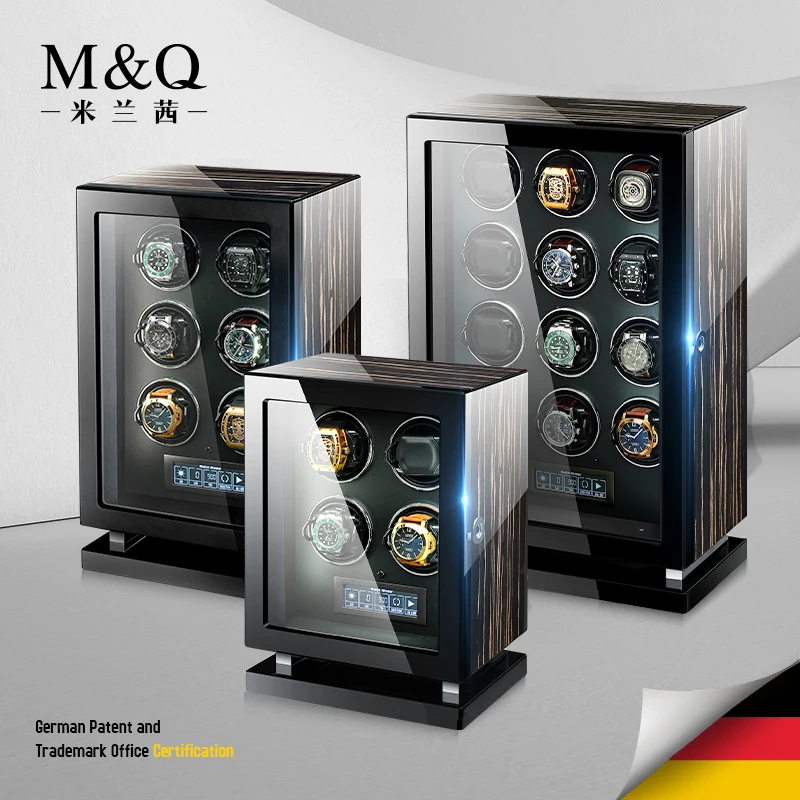
Creating Impressive Display Setups: Showcasing Your Passion
While protection remains paramount, displaying your collection transforms watches from mere possessions into conversation pieces and expressions of personal style. Thoughtful display solutions balance visibility with security and preservation.
Display Options for Different Settings
- Glass-topped display cases – Allow viewing without handling
- Illuminated cabinets – Strategic lighting highlights watch details
- Wall-mounted displays – Space-efficient options for prominent visibility
- Rotating showcases – Dynamic presentation with controlled movement
- Integrated furniture – Watch drawers or compartments within desks or dressers
Proper lighting dramatically enhances watch presentation. LED lighting provides several advantages: minimal heat generation, customizable color temperature, and low energy consumption. Cool white lighting (5000-6500K) best reveals dial details, while warmer tones (2700-3000K) highlight gold cases and vintage pieces.
Creating a dedicated watch display area transforms collection management from routine maintenance into an enjoyable experience. Many collectors report spending more time appreciating their pieces when thoughtfully displayed. Exploring various watch storage ideas for collectors can inspire personalized solutions that complement home décor while showcasing prized timepieces.
Our watch display holders offer elegant solutions that balance presentation with protection, ensuring your collection remains both secure and visually impressive.
Watch Accessories, Watch Holder
$94.51 Select options This product has multiple variants. The options may be chosen on the product pageLuxury Watch Boxes, Men's Watch Boxes, Single Watch Box
Price range: $903.35 through $980.97 Select options This product has multiple variants. The options may be chosen on the product pageSingle Watch Travel Case, Watch and Jewelry Box, Watch Roll Travel Case
Price range: $93.44 through $140.65 Select options This product has multiple variants. The options may be chosen on the product pageMen's Watch Organizer, Watch Display Case, Watch Organizer
Price range: $112.68 through $169.45 Select options This product has multiple variants. The options may be chosen on the product pageAutomatic Watch Winder, Luxury Watch Winder, Single Watch Box
$307.39 Select options This product has multiple variants. The options may be chosen on the product pageLuxury Watch Boxes, Luxury Watch Travel Case
Price range: $200.33 through $224.57 Select options This product has multiple variants. The options may be chosen on the product page
Environmental Controls: Temperature, Humidity, and Light Management
Controlling environmental factors significantly extends the lifespan of luxury watches. Even premium storage solutions require proper placement and environmental management.
Optimal Storage Conditions
- Humidity: 40-60% relative humidity (RH)
- Temperature: 65-75°F (18-24°C)
- Light exposure: Minimal UV exposure, away from direct sunlight
- Air quality: Low dust, free from corrosive elements
Humidity poses perhaps the greatest environmental threat to watches. Excessive moisture accelerates corrosion in metal components and promotes mold growth on leather straps, while overly dry conditions can cause leather to crack and gaskets to harden prematurely.
Humidity Control Solutions
- Silica gel packets (replace every 2-3 months)
- Electric dehumidifiers for display cabinets
- Humidity monitors to track conditions
- Purpose-built watch safes with integrated climate control
Temperature fluctuations stress watch components through expansion and contraction. Avoid placing storage near heating vents, fireplaces, or exterior walls with significant temperature variations. Understanding proper long-term watch storage protection techniques helps prevent subtle damage that compounds over time.
For collections in challenging environments (tropical climates, seaside locations), consider specialized storage with enhanced humidity control and sealed compartments. These measures may seem excessive, but they prove cost-effective compared to frequent servicing due to environmental damage.
Maintenance Practices for Stored Watches
Even properly stored watches require regular maintenance. Establishing consistent routines preserves both functionality and appearance, extending the intervals between professional servicing.
Essential Maintenance Routine
- Pre-storage cleaning – Gently wipe down cases and bracelets before storage
- Regular rotation – Even unworn watches benefit from occasional winding and position changes
- Periodic inspections – Check for moisture indicators, corrosion, or strap deterioration
- Proper handling – Hold watches by their bracelets/straps, not by crowns or pushers
- Strap maintenance – Condition leather straps and clean metal bracelets quarterly
For watches in long-term storage, perform a brief functional check every 3-4 months. Run chronograph functions, rotate bezels, and ensure date mechanisms operate correctly. This prevents lubricants from settling and components from stiffening.
Develop a simple tracking system for service dates and maintenance activities. Digital tools or even a basic spreadsheet help monitor service intervals and identify watches requiring attention. Professional servicing generally remains necessary every 3-7 years depending on the manufacturer’s recommendations and watch complexity.
Building a Complete Luxury Watch Storage System
Creating a comprehensive storage system often happens incrementally as collections evolve. A thoughtful approach balances immediate needs with future expansion.
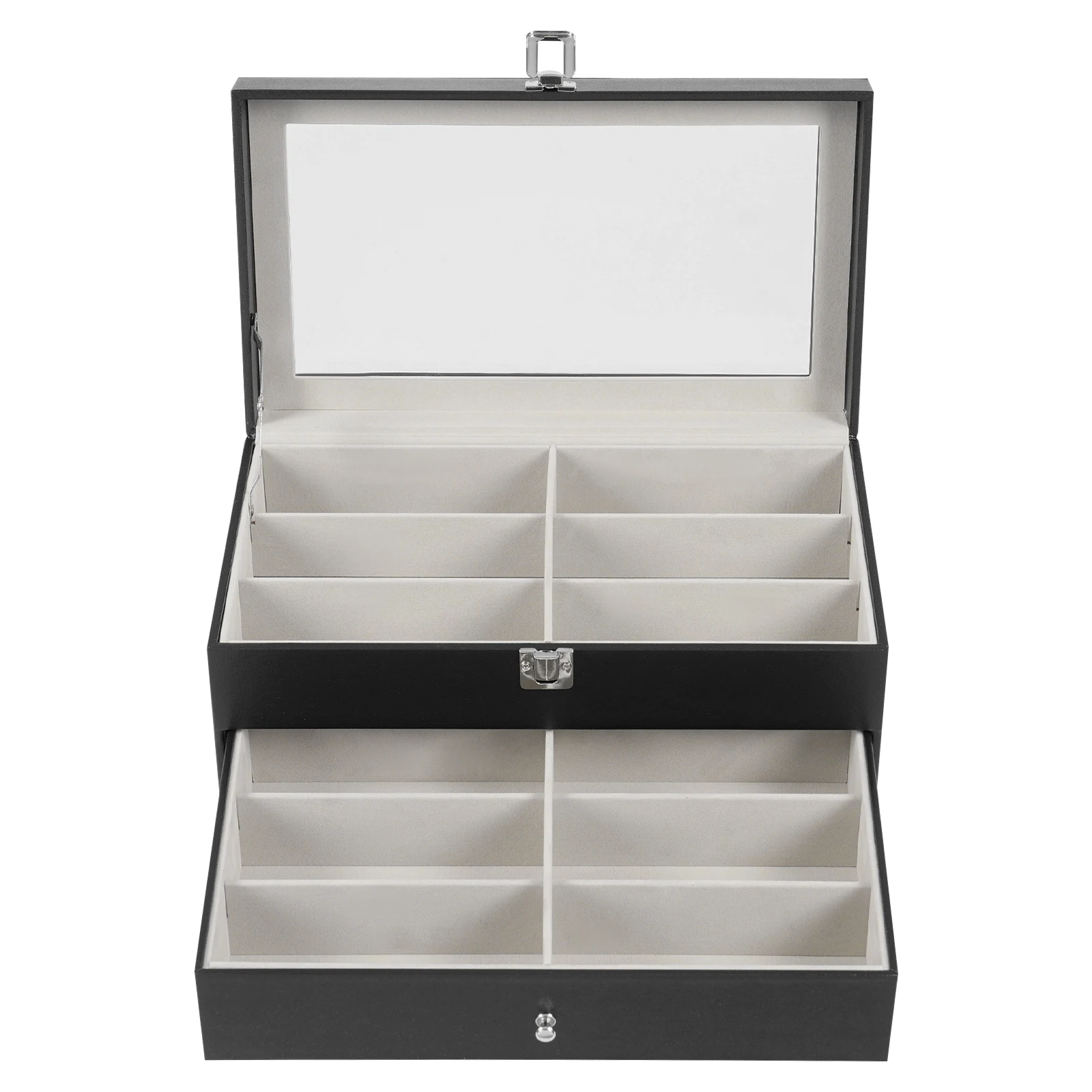
Example Storage Systems by Collection Size
Starter Collection (3-5 watches)
– Quality 5-10 position watch box with individual cushions
– Single watch winder for most frequently worn automatic piece
– Travel pouch or case for portable protection
Established Collection (10-15 watches)
– Premium display case for frequently worn pieces
– Multi-watch winder (4-6 positions) for automatic rotation
– Humidity-controlled storage box for seasonal pieces
– Dedicated travel case with multiple compartments
Advanced Collection (20+ watches)
– Integrated display cabinet with security features
– Multiple winders organized by wearing rotation
– Watch safe for high-value pieces
– Specialized storage for vintage pieces
– Multiple travel options for different scenarios
When planning your storage system, allocate budget proportionally to your collection’s value. As a general guideline, investing 5-10% of your collection’s value in quality storage solutions provides appropriate protection while maintaining financial perspective.
Exploring elegant watch storage solutions and quality wooden watch boxes offers inspiration for creating systems that grow alongside your collection. The most effective setups combine various storage types to address specific needs while maintaining a cohesive aesthetic.
Avoiding Common Watch Storage Mistakes
Even experienced collectors occasionally make storage errors that risk damaging valuable timepieces. Recognizing and avoiding these common mistakes protects your investment.
Frequent Storage Errors
- Overcrowding – Forcing watches into tight spaces risks scratches and damage
- Improper orientation – Storing manual or automatic watches crown-down stresses movement components
- Material conflicts – Allowing metal bracelets to contact other watches causes scratching
- Magnet exposure – Placing watches near speakers, tablets, or magnetic clasps
- Irregular winding – Sporadic winding of automatic watches strains mechanisms
Warning Signs of Storage Problems:
– Condensation inside watch cases
– Discoloration on dials or hands
– Stiffness in previously smooth functions
– Unusual sounds during operation
– Accelerated power reserve depletion
For immediate storage improvement, separate watches with metal bracelets using dividers or individual compartments, relocate storage away from direct sunlight and heating/cooling vents, and implement basic humidity monitoring. These simple steps significantly reduce common risks while you develop more comprehensive solutions.
Frequently Asked Questions About Luxury Watch Storage
How often should I wind my watches if not using a winder?
Manual watches should ideally be wound every 1-2 weeks, even in storage. This keeps lubricants distributed and components exercised. For stored automatic watches without winders, gentle winding once monthly helps maintain component condition.
Can I store watches with leather straps touching other watches?
It’s best to avoid direct contact between leather straps and other watches or straps. Dyes can transfer, and oils from leather may affect other materials. Use dividers or individual compartments to prevent contact.
Is it necessary to service watches that are regularly stored?
Yes. Even unworn watches require periodic servicing as lubricants degrade over time regardless of use. Stored watches generally follow the same service intervals (3-7 years) as worn timepieces.
How do I protect my watches from magnetism during storage?
Keep watches at least 6 inches away from electronic devices, speakers, and magnetic clasps. For highly sensitive movements, consider dedicated anti-magnetic storage boxes or cases with magnetic shielding.
Should I keep original boxes for watches I regularly wear?
Yes. Original boxes and papers can increase resale value by 15-30%. Store these materials in a dry location separate from your watches if space is limited.
Is it safe to store watches in a bank safe deposit box?
Safe deposit boxes provide excellent security but may lack humidity control. Consider using sealed containers with humidity control packets if using this option for long-term storage.
How can I tell if my storage environment has improper humidity?
Small humidity gauges (hygrometers) provide accurate readings. Physical signs include condensation inside watch crystals, water spots on dials, or unusual odors from leather straps.
Are watch winders harmful for mechanical watches?
Quality winders with proper TPD settings are beneficial for automatic watches. However, poorly designed winders or incorrect settings can potentially cause excessive wear. Choose winders with adjustable settings specific to your watch models.

